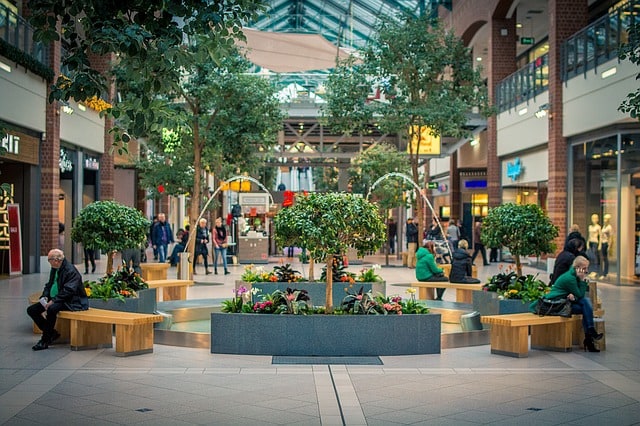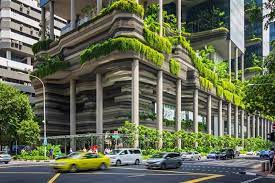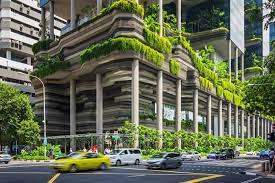Green architecture
Courtesy : conserve-energy-future.com
Green architecture is a green building design technique. The designs are created with the environment in mind including focusing on the larger construction implications of environmental sustainability. Green architecture gives careful consideration to designing energy efficient and eco-friendly houses and buildings. Natural ecology is a key concept in green architectural providing the basis for the construction model.
The goal of green architecture is to create models that safeguard the natural environment and are adapted to integrate well with the existing environmental setting in terms of space and energy, water and resource use. The designs have to be sustainable from the initial consultations, site survey and design, plan modification, material use, harmony with the existing ecology, and green building choices to guarantee that all the environmentally friendly details are included.
Materials Used in Green Architecture
The materials used in green architecture are those that encourage good thermal performance, energy efficiency, water efficiency, resource management and save general construction costs. The materials long-term effects on the environment are a key criterion for selection. The following list provides a guide to the types of materials which are suitable for green building. The best materials are those which combine several of these features; materials like Accoya modified wood. This is sustainable, durable, manufacture is resource efficient, it is made from renewable material and it is non-toxic. Materials like these are the mainstay of the most ecological builds and their use helps towards obtaining certification such as GGBC.
1. Recycled products
Recycled content products are used in green architecture on account of their resource efficiency. Examples of recycled products include paper insulation from recycled newspapers and cardboards, cotton insulation from recycled denim, recycled stone and recycled steel. They are effective because they use fewer chemicals and energy to process and also require fewer virgin resources.
2. Materials manufactured with resource efficient processes
These materials are preferred in green construction because they not only require less energy to produce but also minimize resource wastage and greenhouse gas emissions. An example is sustainable concrete made from crushed glass and wood chips or slag.
3. Natural, abundant or renewable materials
These materials can be obtained from sustainably managed and naturally occurring sources. They must also be renewable and adequately abundant in nature. Examples are certified wood and solar tiles.
4. Refurbished, salvaged or remanufactured
As the name suggests, these are the materials that are refurbished, salvaged or remanufactured. Their essentiality includes their inherent capacity to create value and saving materials from disposal or generating landfill waste. The materials are renovated, repaired or improved in performance, functionality or quality. Examples include plastic ceilings.
See also How Much Waste and Plastic Junk is in our Oceans?
5. Reusable and recyclable materials
These are the materials that were previously used, but are still in good condition and can be used in new construction. Examples include old plumbing and old doors.
6. Durable materials
Materials that last longer are more environmentally friendly because they eliminate the need for frequent replacements and maintenance. They also reduce the overall costs of dependence of new upgrades in an already constructed building or house. Besides, durable materials have high reusable and recyclable value.
7. Locally available
The use of locally available materials is also part of green architecture since it minimizes transportation costs, greenhouse gas emission during transportation, and the interference with the local ecology.
8. Non-toxic materials
Non-toxic materials are highly recommended in green architecture. They promote IAQ and they are substantially low in carcinogen elements, irritants or reproductive toxicants.
9. Moisture resistant products
Moisture resistant materials are the ones that hinder the growth of biological contaminants in buildings. They are 100% moisture resistant and thus highly preferred in green architecture in terms of improving IAQ.
10. Low VOC products
Products with low VOCs are a greatly desired in green architecture designs. They improve IAQ since they are non-toxic and less hazardous to the occupant’s health.
11. Water and energy conserving materials
Water conserving materials help in reducing the overall water requirements during construction and also in the lifecycle of the building or house. The materials are designed to reduce water wastage and enhance water quality in the landscape areas and within the building. Energy conserving materials, on the other hand, capitalize on scaling down energy costs and improving energy efficiency of the buildings. Examples of energy efficient materials are solar tiles and smart insulators.

Principles of Green Architecture
As the world migrates towards a more sustainable future, architects are confronted with an important goal of design models that lessen the negative impacts on our environment due to construction. To make this a reality, the designs are guided by the principles of green architecture. Here are the principles.
- Energy efficiency
The principles of green architecture incorporate various measures that encourage energy efficiency. It is done through designs that cut down energy consumption including the energy requirements for energy use and the exploitation of alternative and sustainable energy sources such as wind and solar. For instance, green architecture takes care of natural air flow patterns and natural lighting to reduce the needs for heating, ventilating, and air conditioning; and artificial daytime lighting respectively. The designs simply insist on reducing the lifetime costs of heating, lighting, air condition and other electric power usage requirements.
- Water efficiency
See also Various Threats to Biodiversity and it’s Solutions
Green architecture works with the inspiration of ecological surrounding to protect water quality and reduce water consumption or wastage. It is part of the sustainable principles in green construction which encourage the efficient use of water. This green architecture principle makes certain that water is harvested, used, purified and re-used during the entire construction period. At the same time, the architectural design ensures that in the entire life cycle of the building not only supports efficient water use but also preserves the quality of surrounding water systems and makes use of water recycling mechanisms.




